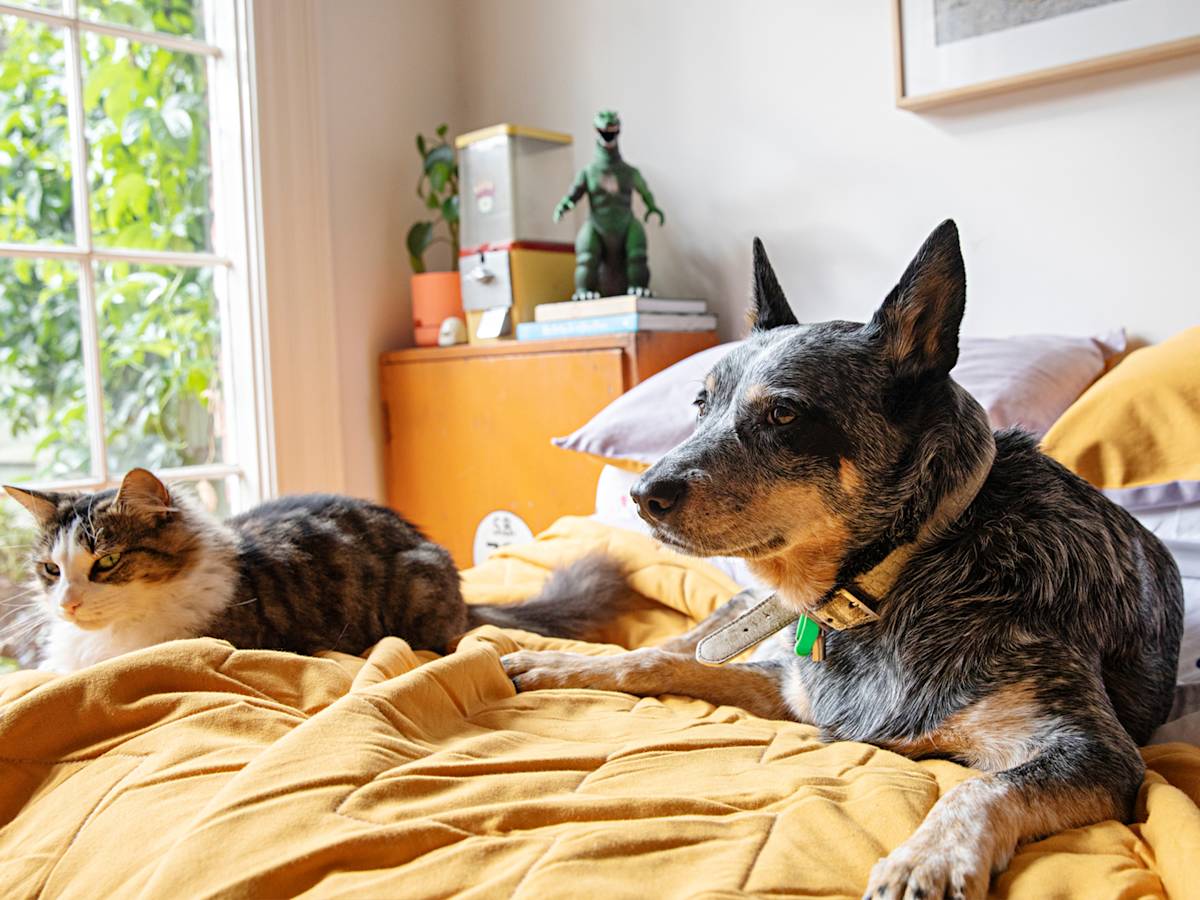What’s the Deal With Pet Insurance?
It covers your pet so you can get that broken leg fixed — while keeping your wallet happy.
Health insurance is a hotly debated subject, but anyone who’s practically ended up back in the emergency room after receiving the bill will probably (read: definitely) make no bones about the urgency of coverage. Pet insurance can protect your cat or dog — and your wallet, too. The truth is, no matter how proactive you are about your pet’s wellbeing, accidents happen: Your cat could develop a coconut-sized hairball, your pup could tear their ACL at the dog park, or — worse — your pet could be diagnosed with cancer. In any case, you shouldn’t have to hesitate to make the right call when your pet’s life is on the line. Here’s everything you need to know about pet insurance for when your dog or cat needs more than TLC.
So, what is pet insurance?
Much like with your own coverage, pet insurance will foot a percentage of your pet’s medical bills, but it works pretty differently than human health insurance. Dr. John Iovino explains: “We’re not tied to insurance companies, so I accept any insurance [a patient] has.” This means there’s no “in-network” and “out-of-network” red tape to deal with, nor surprise bills showing up at your door weeks later. Keep track of your receipts and records because most policies require that you pay a vet upfront, then submit paperwork to be reimbursed. Once you’ve filed a claim, the insurance company will typically ask your vet for details on the diagnosis and treatment plan, then cut you a check after you’ve met your deductible and if the procedure is covered.
What does pet insurance cover?
Not all policies are created equal. As a baseline, coverage usually includes accidents, emergencies, hospitalizations, and illnesses. Beyond that, it’s kind of a choose your own adventure. Some plans cover wellness exams, pet vaccinations, and other preventive care, such as dental cleanings. Others offer extra coverage (at a cost) for alternative medicine like physical therapy and acupuncture. We recommend reading the fine print.
The biggest drag that your pet’s insurance coverage has in common with yours is a hard stop at pre-existing conditions. You won’t be blacklisted from taking out a policy for your pet, but care tied to that specific condition will come out of your wallet. Ergo, it’s a smart move to sign up for pet insurance while they’re still the picture of health. “Once you get the stamp that everything is normal after your pet’s first physical exam, if a problem comes up later, insurance will be totally willing to take care of it,” says Dr. Iovino.
How much will I have to fork over?
Costs depend on which company and what plan you choose. Most pet insurance plans have monthly premiums that range from $15 to $59, dependent on your specific policy and your pet’s breed, age, and history — so the final number is still a question mark, sorry. Your deductible. i.e. how much you pay before benefits kick in, can also vary plenty depending on coverage options, annual benefit limits, and cost share (what percentage of services you pay for versus how much the insurance company covers). The deductible range on most pet plans can leap from $100 to $1,000 per year, so it’s worth shopping around. And if there’s more than one animal in your household, keep your eyes open for plans that offer multi-pet discounts on premiums.
How do I shop around?
How many reviews did you read before splurging on your Peloton? Doing your due diligence (research, reading reviews, asking your vet for their recos) is a good start. If the options seem endless, Pawlicy Advisoropens in new tab is a useful tool for comparing plans side-by-side and getting quotes, while Pet Insurance Reviewopens in new tab offers honest reviews from real pet parents. Dr. Iovino points out that it’s also worth checking with your own insurance company since some now offer pet insurance as part of the human benefits package.
So, does this even apply to me?
New pet parent? Then yes, and you can quote me. Or Dr. Iovino — as a vet, he is all for pet insurance for new cats and dogs; it puts pet parents in the right mindset of sparing no expense for their animals. (If you’re a new dog parent, also consider your pup’s breed as many — especially purebreds — are predisposed to hereditary health conditions that you’ll want to cover before they become pre-existing conditions.) Even elderly pets and those with pre-existing conditions can benefit.
If some premiums are out of your price range, check out “accident only” plans, which will only set you back about $10 a month but can save you $10,000. Another option is CareCreditopens in new tab, which works a lot like a traditional credit card: after your applicationopens in new tab is approved, you can use your CareCredit card to pay up front for vet bills on a payment plan. CareCredit can be used for routine pet care — such as diagnostics, check-ups, parasites, and spay/neuter surgeries — as well as emergency care.
Some people are fortunate in that they have the resources, or the willingness, to go into debt for their pet’s care if necessary. They are, in effect, opting for self-insurance. Others, perhaps without extra resources or who just want to sleep better at night, prefer paying a monthly pet insurance premium in the hope that it will cover expensive vet bills down the road.
It’s heartbreaking that dogs and cats are surrendered to shelters because their parents are unable to afford pet-care costs. Insuring your pet will give you the peace of mind that when you receive an estimate for your pet’s critical care, you can take care of it right away. It also means that Dr. Iovino can do his job: “It’s really discouraging to work through cases when people just can’t pay. If insurance allows them to move forward with diagnostics and treatment, then I’m happy because I can actually do something for their pet,” he says. “If you want to 100 percent guarantee that you’re going to do as much as you can for your pet’s health — financially — then you need an insurance plan.”










